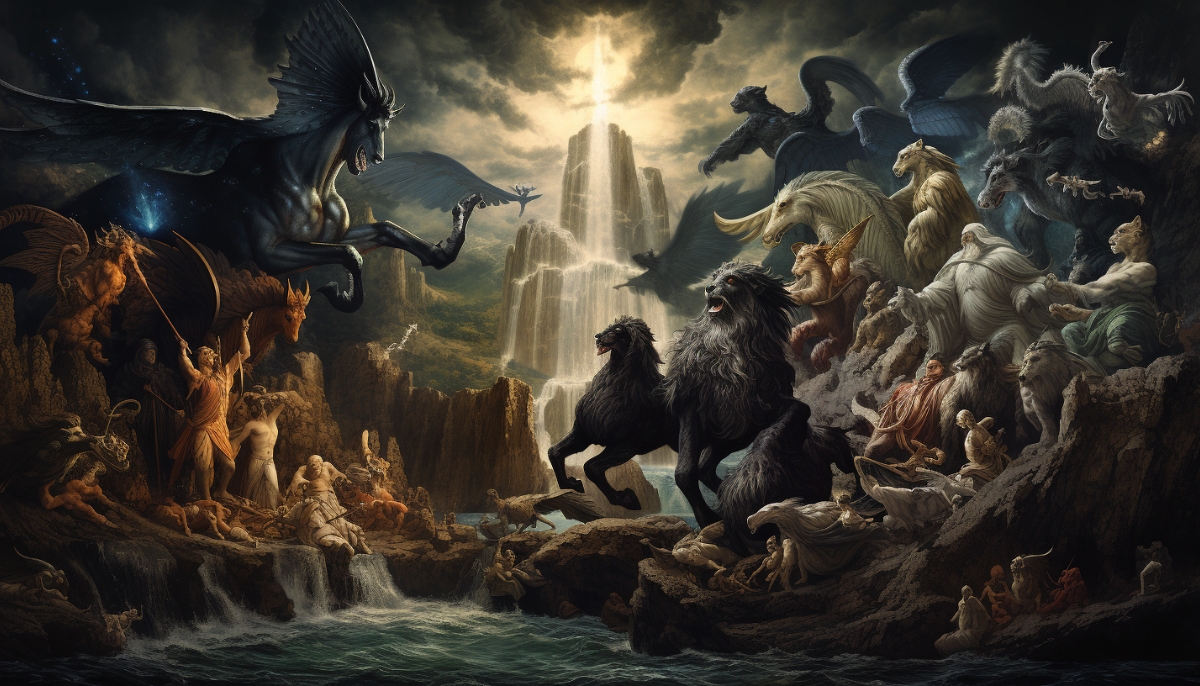In Greek mythology, animals hold a special place, often serving as symbols or companions to the gods.
Unlike the mystical creatures and monsters covered in our separate article, this piece focuses on the animals revered in Greek mythology, each tied to specific gods and embodying their divine characteristics.
These animals are more than just pets or favorite creatures; they are integral to the identity and powers of the gods they represent. From the mighty eagle of Zeus, symbolizing his reign over the skies, to the humble tortoise of Hermes, each animal carries a wealth of symbolism and meaning.
As we explore these sacred animals, we uncover fascinating stories and more profound insights into the values and beliefs of ancient Greek culture.
Sacred Animals of Zeus: Eagle and Bull

Zeus, the most powerful of the Greek gods, ruled over Mount Olympus and is known as the god of the sky and thunder.
In Greek mythology, he is depicted as the supreme deity who oversees the universe, wielding his thunderbolt with authority.
His decisions and actions greatly influence the lives of gods and mortals alike.
Significance of the Eagle: Symbol of Strength and Sovereignty
The eagle, revered for its strength and majestic flight, symbolizes Zeus’s dominion over the skies and his role as the king of the gods.
This bird’s soaring height and keen sight align with Zeus’s omnipotence and status as the ultimate authority in the Greek pantheon.
Importance of the Bull: Representation of Transformation and Power
The bull, a symbol of power and masculinity, represents Zeus’s ability to transform and assert his will.
In myths, Zeus often took the form of a bull, most notably when abducting Europa. This transformation underscores his omnipresence and his association with fertility and strength.
Sacred Animals of Hera: Peacock, Cuckoo, and Cow
Hera, the wife of Zeus, is the goddess of marriage and childbirth. In Greek mythology, she is portrayed as a regal and often jealous figure, protective of her status and marriage.
Despite her complex relationship with Zeus, Hera is revered as a matrimony and familial unity symbol.
Peacock: A Symbol of Beauty and Royal Status
The peacock, with its stunning feathers, represents Hera’s beauty and her status as the queen of the gods.
The bird’s eye-like patterns on its tail feathers symbolize Hera’s watchful nature as a protector of women and an upholder of marriage.
Cuckoo: Emblematic of Hera’s Love for Zeus
The cuckoo is unique in Hera’s story, symbolizing her relationship with Zeus. According to myth, Zeus transformed into a cuckoo to win Hera’s affection, making this bird a symbol of their union and the complexities of their relationship.
Cow: Represents Nurturing and Protection
The cow, a symbol of motherhood and fertility, is sacred to Hera. This gentle animal aligns with Hera’s role as the goddess of women and childbirth, reflecting her nurturing nature and protective stance over families.
Sacred Animals of Poseidon: Horse, Dolphin, and Cretan Bull
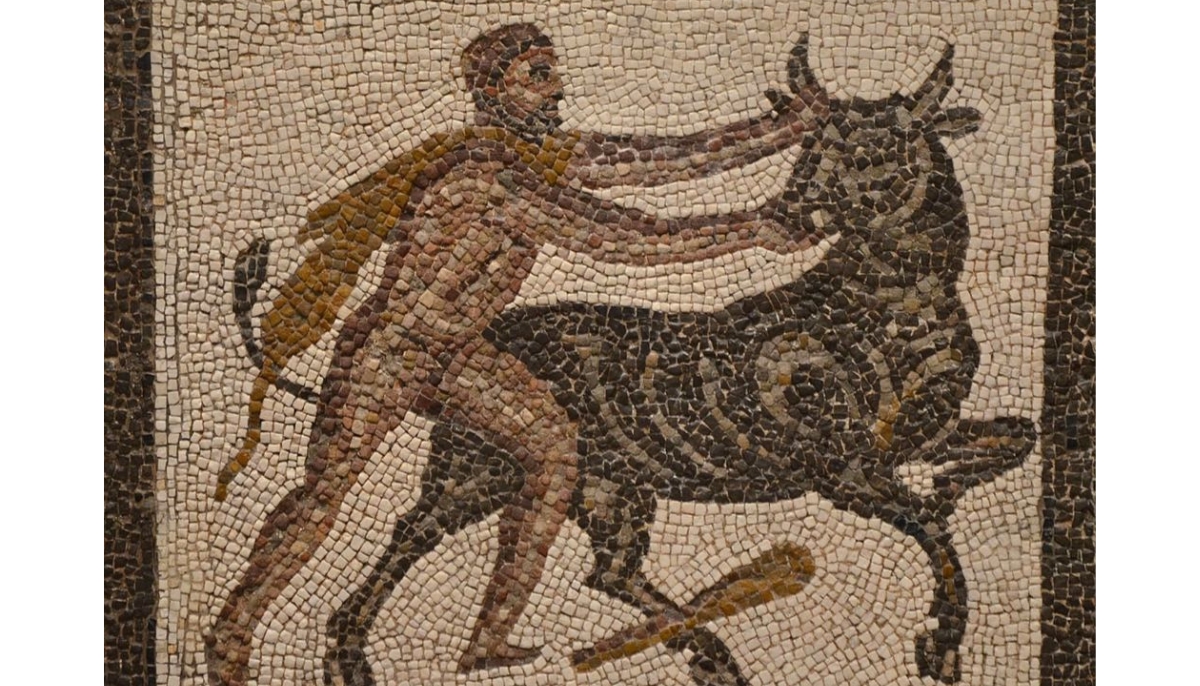
Poseidon, brother of Zeus, reigns as the god of the sea, earthquakes, and horses. Known for his explosive nature, Poseidon is an influential figure in Greek mythology, commanding both the calm and the fury of the sea.
Horse: A Symbol of Valor and Beauty
The horse, a creature of strength and elegance, symbolizes Poseidon’s power and gift to humanity. This animal’s grace and speed reflect the awe-inspiring and sometimes fearsome aspects of Poseidon’s domain over the sea and the earth.
Dolphin: Connection to the Sea and Marine Life
The dolphin, a beloved sea creature, represents the gentler side of Poseidon’s realm. Known for their intelligence and playful nature, dolphins embody Poseidon’s role as the guardian of marine life and his connection to the world beneath the waves.
Cretan Bull: Represents Minoan Civilization and Poseidon’s Influence
The Cretan Bull, a figure from Greek mythology, is linked to Poseidon’s influence over the ancient Minoan civilization.
This bull’s story, intertwined with the legend of the Minotaur, showcases Poseidon’s power to both support and challenge human endeavors, reflecting his complex nature as a god.
Sacred Animals of Athena: Owl
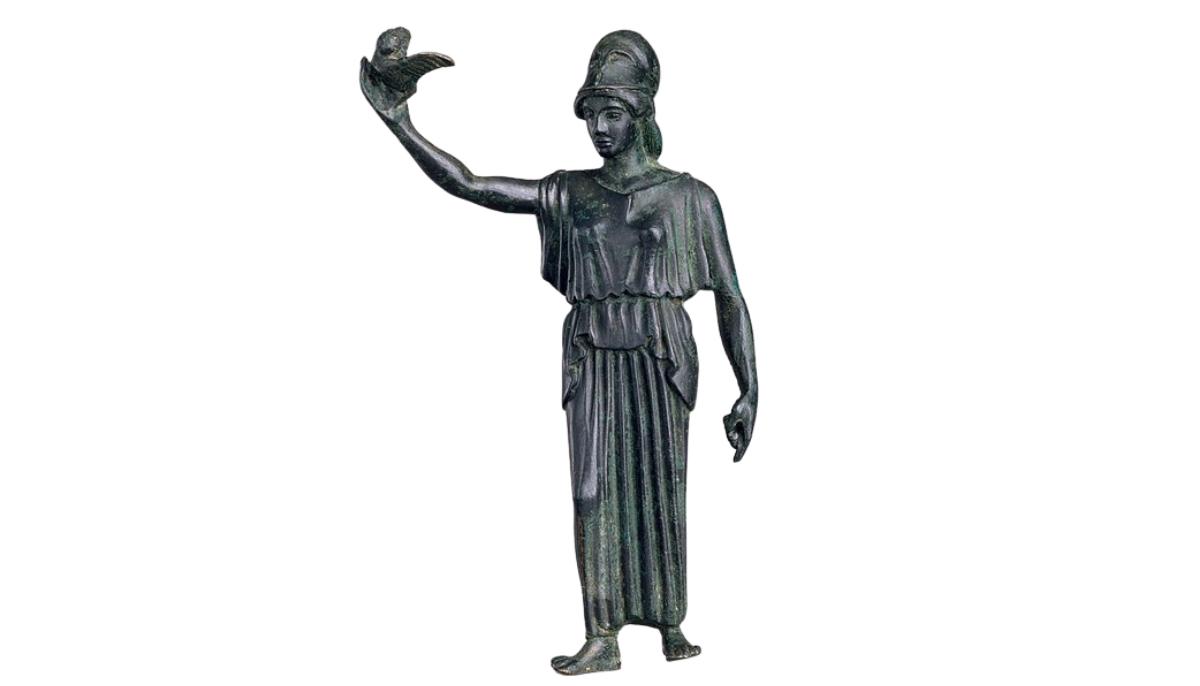
Athena, the daughter of Zeus, is revered as the goddess of wisdom, courage, and warfare. Known for her strategic prowess and calm temperament, Athena is a crucial figure in Greek mythology, often depicted with her armor and a wise owl.
She is celebrated for her intelligence fairness and as a patroness of heroes and cities.
Owl: Emblem of Wisdom and Strategic Warfare
The owl, a symbol of wisdom and keen insight, is closely associated with Athena. This bird represents Athena’s role as the goddess of wisdom and her strategic skills in warfare.
The owl’s silent and observant nature echoes Athena’s ability to see the truth and her strategic thinking in war and peace.
Sacred Animals of Apollo: Cow, Hawk, Snake, Crow/Raven, Cicada, Swan, Mouse
Apollo, another child of Zeus, is the god of music, prophecy, healing, and the arts. He is a multifaceted deity known for his physical beauty, musical talent, and role as an oracle.
Apollo’s connection to various animals reflects his diverse attributes and influence in Greek mythology.
Cow: Associated with Apollo’s Cattle
The cow is linked to Apollo through the myth of his sacred cattle, representing nourishment and prosperity. This association underscores Apollo’s role as a nurturer and his connection to the pastoral and the arts.
Hawk and Crow/Raven: Messengers and Symbols of Prophecy
The hawk and crow/raven are seen as messengers for Apollo, symbolizing his role as a god of prophecy. These birds, known for their keen sight and intelligence, represent Apollo’s ability to see into the future and his connection to the divine.
Snake: Represents Apollo’s Victory over Python
The snake is a significant symbol for Apollo, representing his victory over the serpent Python. This victory led to the establishment of his oracle at Delphi, making the snake a symbol of Apollo’s power over knowledge and prophecy.
Cicada and Swan: Symbols of Music and Poetic Inspiration
The cicada and swan are associated with Apollo’s domain over music and poetry. The cicada, with its melodious song, symbolizes the beauty of music, while the swan, a creature of grace and beauty, represents poetic inspiration.
Mouse: Unusual but Sacred to Apollo
The mouse, though an unusual symbol, is sacred to Apollo. This tiny creature represents Apollo’s role as a protector and his ability to see even the smallest details, reflecting his comprehensive understanding of the world.
Sacred Animals of Artemis: Deer and Wild Boar
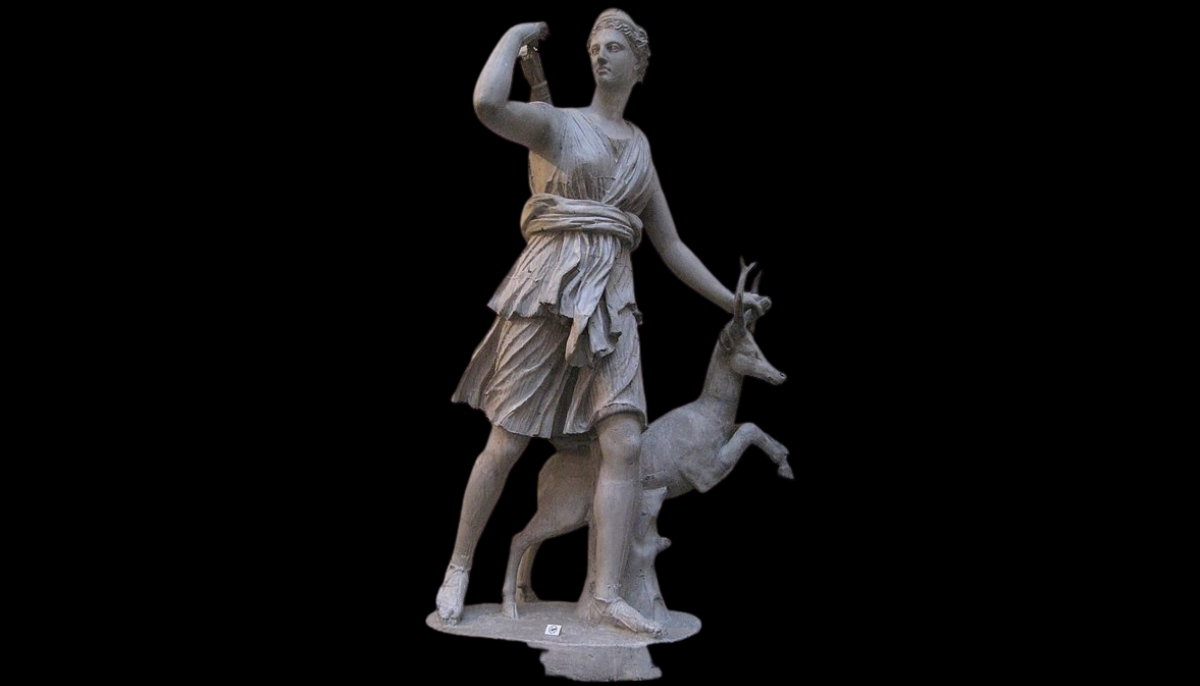
Artemis, the twin sister of Apollo, is the goddess of the hunt, wilderness, and childbirth. Known for her independence and fierce nature, Artemis is a protector of young women and wildlife. She is often depicted with a bow and arrow, roaming the forests and mountains.
Deer: Symbol of Hunting Prowess and Wilderness
The deer, a graceful and swift animal, is sacred to Artemis. It symbolizes her skill as a huntress and her connection to the wilderness. The deer’s agility and beauty reflect Artemis’s qualities as a goddess of the hunt and nature.
Wild Boar: Represents the Challenges of the Hunt
The wild boar, a formidable and challenging prey, is also associated with Artemis. This animal represents the dangers and trials of the hunt, highlighting Artemis’s role as a goddess of protection and challenge in the wild.
Sacred Animals of Hermes: Tortoise and Ram
Hermes, known for his speed and cunning, is the messenger of the gods and the patron of travelers, thieves, and merchants.
In Greek mythology, he is depicted as a clever and versatile deity, capable of moving swiftly between the worlds of gods and mortals. Hermes’s association with certain animals highlights his diverse roles and ingenious nature.
Tortoise: Linked to Hermes’ Invention of the Lyre
The tortoise holds a unique place in Hermes’s mythology. According to legend, Hermes created the first lyre using a tortoise shell. This story links the tortoise to Hermes, symbolizing his inventiveness and contribution to music and the arts.
Ram: Symbolizes Protection and Ingenuity
The ram, another animal associated with Hermes, symbolizes protection and ingenuity. In myths, Hermes is often depicted as a shepherd, and the ram, with its solid horns and protective nature, represents Hermes’s role as a guardian and his clever, resourceful character.
Sacred Animals of Ares: Dog, Vulture, and Boar
Ares, the god of war, embodies the physical and violent aspects of battle. Known for his fierce and aggressive nature, Ares is revered and feared in Greek mythology.
His sacred animals reflect his connection to warfare and the harsh realities of conflict.
Dog: Represents Loyalty and Ferocity in War
The dog, known for its loyalty and ferocity, is a fitting symbol for Ares. In the context of war, the dog represents the dual aspects of a warrior’s nature: loyalty to their comrades and relentless aggression towards their enemies.
Vulture: A Symbol of Death and Aftermath of Battles
The vulture, a scavenger often seen on battlefields, symbolizes war’s aftermath and death’s inevitability. This bird’s association with Ares underscores the harsh realities of war and the role of Ares as the god of conflict and destruction.
Boar: Emblematic of Strength and Formidable Nature
The boar, a fierce and formidable animal, is also sacred to Ares. Its aggressive nature and strength symbolize the brutality and intensity of warfare, reflecting Ares’s role as the deity of battle and strife.
Sacred Animals of Demeter: Serpent, Pig, and Gecko
Demeter, the goddess of agriculture, harvest, and fertility, is a nurturing figure in Greek mythology.
She is deeply connected to the cycles of life and growth, particularly about crops and the earth. Demeter’s sacred animals symbolize her role in agriculture and the natural world.
Serpent: Symbol of Fertility and Earth’s Renewal
The serpent, often associated with cycles of life and death, symbolizes fertility and the earth’s renewal. In the context of Demeter’s mythology, the serpent represents the regenerative aspects of nature and the cycles of growth and decay in agriculture.
Pig: Represents Agriculture and Abundance
The pig, an animal linked to fertility and abundance, is sacred to Demeter. In ancient rituals, pigs were often sacrificed to Demeter, symbolizing the nourishment and bounty provided by the earth and the goddess’s role in ensuring a fruitful harvest.
Gecko: Lesser-Known Symbol of Fertility and Earth
The gecko, though a lesser-known symbol, is also associated with Demeter. This tiny creature, often found in agricultural settings, represents the fertility of the earth and the smaller yet vital aspects of the natural world that contribute to the cycle of life and growth.
Sacred Animals of Hades: Black Ram, Screeching Owl
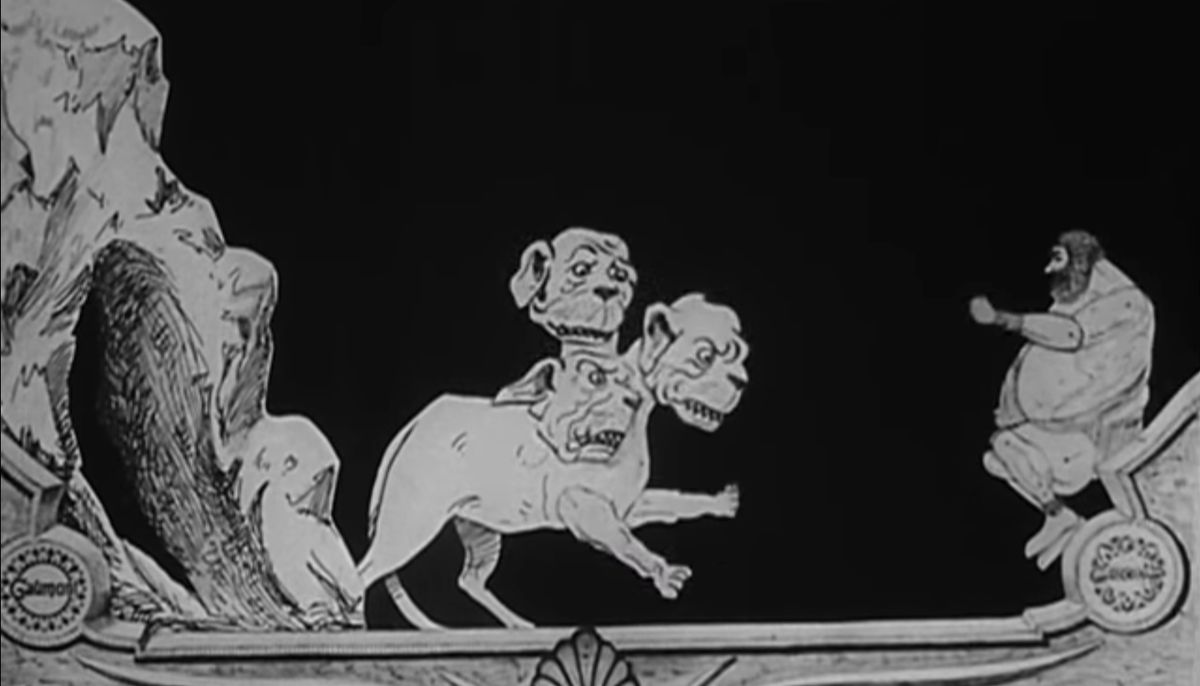
Hades, the ruler of the underworld and the god of the dead is a formidable figure in Greek mythology.
He oversees the realm of the deceased and maintains the balance between life and death. Hades’s sacred animals reflect his dominion over the underworld and the complex nature of his role.
Black Ram: Represents Death and the Underworld
The black ram, with its dark and imposing presence, symbolizes death’s finality and the underworld’s solemnity. This animal represents Hades’s authority over the realm of the dead and the inevitability of mortality.
Screeching Owl: A Harbinger of Doom and Darkness
The screeching owl, often associated with ill omens and the night, is a harbinger of doom and darkness. Its eerie call and nocturnal nature align with the mysterious and often feared aspects of Hades’s underworld.
Sacred Animals of Aphrodite: Swan, Dove, Hare
Aphrodite, the goddess of love, beauty, and desire, is a central figure in Greek mythology. Known for her enchanting beauty and role in romantic affairs, Aphrodite’s influence extends to all aspects of love and attraction. Her sacred animals symbolize the different facets of love and beauty.
Swan: Symbol of Beauty and Romantic Love
The swan, a creature of grace and elegance, symbolizes the beauty and purity of romantic love. Associated with Aphrodite, the swan represents the goddess’s allure and her connection to the ideal of true love.
Dove Represents Peace, Love, and Beauty
The dove, known for its gentle nature, symbolizes peace, love, and beauty. This bird, often depicted alongside Aphrodite, represents love’s harmonious and tender aspects and the goddess’s role as a nurturer of affection and relationships.
Hare: Emblem of Desire and Prolific Love
The hare symbolizes fertility and desire and represents love’s passionate and prolific nature. Associated with Aphrodite, the hare underscores the goddess’s role in love and attraction’s sensual and fertile aspects.
Sacred Animals of Dionysus: Panther

Dionysus, the god of wine, festivity, and ecstasy, is celebrated for his ability to liberate and inspire through wine and revelry. Known for his dual nature of joy and frenzy, Dionysus’s connection to the panther reflects the transformative power of his domain.
Panther: Represents Inner Strength, Ecstasy, and Transformation
The panther, a beautiful and fierce creature, symbolizes the transformative power of Dionysus’s wine and festivities. This animal represents the unleashing of inner strength and the ecstatic freedom in Dionysus’s celebrations.
Sacred Animals of Hephaestus: Donkey, Guard Dog, Crane
Hephaestus, the god of fire, metalworking, and craftsmanship, is known for his skill in creating unparalleled weapons and artifacts for the gods.
Hephaestus’s talent and determination are central to his identity despite his physical imperfections. His sacred animals symbolize various aspects of his craftsmanship and protective nature.
Donkey: Symbol of Labor and Craftsmanship
The donkey, an animal known for its hard work and endurance, symbolizes the labor and perseverance inherent in craftsmanship. This animal reflects Hephaestus’s dedication to his craft and tireless work ethic.
Guard Dog: Represents Protection and Loyalty
The guard dog, a symbol of protection and loyalty, represents Hephaestus’s role as a protector of homes and a loyal servant of the gods. This animal underscores the protective nature of Hephaestus’s creations and his loyalty to those he serves.
Crane: Lesser-Known but Significant to Hephaestus
The crane, a bird associated with vigilance and balance, is a lesser-known but significant animal for Hephaestus. This bird symbolizes the precision and balance required in craftsmanship, reflecting Hephaestus’s skill and attention to detail.
In Greek mythology, the sacred animals of the gods are not mere companions; they are profound symbols that reflect the deities’ powers, attributes, and influence.
From the majestic eagle of Zeus to the hardworking donkey of Hephaestus, each animal holds a special place in the mythological narrative, offering insights into the interconnectedness of nature and divinity.
These animals enrich the stories of the gods and provide a deeper understanding of the values and beliefs of ancient Greek culture.
